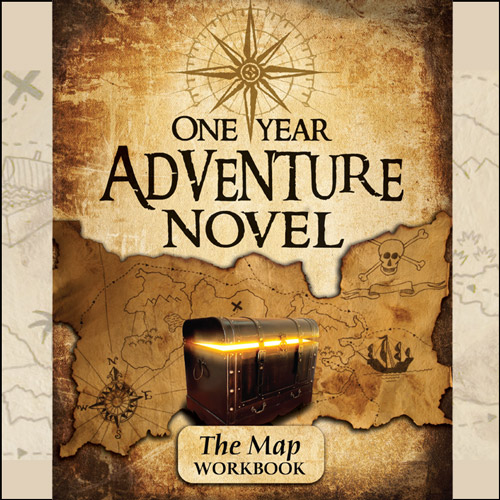Why You Should Write Bad Novels
Guest post by Kathryn Comstock
Since joining The One Year Adventure Novel at age 13, Kathryn Comstock has completed not one, but five novels. Here Kathryn shares what writing each of these novels taught her.
 “Learn by doing” is one of the first phrases new 4-Hers learn. I have found this true in completing my 4-H projects, but also in life and writing.
“Learn by doing” is one of the first phrases new 4-Hers learn. I have found this true in completing my 4-H projects, but also in life and writing.
I recently finished my fifth novel, #754. So far, this one is the best developed. The public will likely never see the novels that came before #754, however, I learned many valuable lessons from those novels that show in my writing today.
1. Learn From Those Who Have Gone Before
At the time I wrote my first two novels, Freedom’s Bonds and Seeker of the Stars, I was enamored with two fantasy books by a homeschool author. Ideas and themes from her novels showed up in my work, even down to character traits. My main characters are almost exact copies of hers.
The most important lesson I learned from my first novels is that it’s okay to base work off someone else when first learning. Seeing what more experienced authors have done and trying it can be a really good way to experiment with different genres. My first two novels can never be published because of the similarities between them and the books of this author, but they were a good springboard into the world of writing.
2. NaNoWriMo Can Be Detrimental to Your Novel’s Health
My third novel is a children’s book called Moonbeam. It’s about a horse named Moonbeam, and is an allegorical retelling of Jesus’ life, death, and resurrection. I wrote this novel in November of 2011 during National Novel Writing Month (NaNoWriMo). 2011 was my first time tackling such a massive endeavor as writing a novel in one month, so I really had no idea what I was getting into.
Moonbeam had a lot of potential. Since I was pretty young at the time, I couldn’t do it justice in just one month. The main reason it didn’t work out, though, is that I didn’t invest as much time in the planning stage as I should have. During the month of October, I only planned off and on, thinking I could finish planning when I began writing.
I learned that one cannot do enough planning and outlining before NaNoWriMo. Some novels can be written without a detailed outline, but usually those novels are written over a longer time span than 31 days. Taking the extra time to plan will make November NaNoWriMo much easier.
3. Research and Stick to Your Plan
I took a Civil War class in the fall of 2012. This, along with receiving the Other Worlds curriculum for my birthday, prompted me to write a sci-fi/historical fiction. One Thirty-Six, my fourth novel, centered on a young man named Elijah. One of his ancestors fought in the Civil War at the First Battle of Bull Run, a battle Elijah and his family reenact every year. This novel brings together the best of two literary worlds: Civil War conspiracies and time travel.
My new obsession with the Civil War had me reading multiple books, ranging anywhere from textbooks to historical fiction to conspiracy theorist-esque novels. The outline for One Thirty-Six changed so many times I began to lose track of what the characters were supposed to be doing and what my story goal was.
Tips:
- Research excessively. I still have the notebook I filled with interesting tid-bits I’d learned while reading. Be sure the notebook can be expanded, because it will get large very quickly! Research is just as important as outlining, especially in historical fiction. The novel may be a great story, but if the genre is marked as historical fiction and there are inaccuracies, it will really turn readers off.
- Stick with the outline. As I mentioned before, I changed >One Thirty-Six countless times. This made it hard for me and friends I had critiquing the novel to keep track of what transpired. Each time I learned about a new Civil War event or conspiracy, I added said event to the book. Though this was my first novel to reach over 50,000 words, it should have been much shorter. I added way too many changes. Of all my novels, this is the one I learned the most from.
4. Characters Need Knots
A character knot is some issue a character needs to resolve. #754, my most recent rough draft, involves a huge knot. It’s so large, in fact, that my main character, Eirwyn, won’t completely resolve it until the second book.
Eirwyn struggles with bitterness. She’s been imprisoned her entire life for a disagreement that happened two hundred years ago between the ruling family and her ancestor. Through the novel, Eirwyn learns that she needs to surrender her bitterness to God and forgive instead of staying angry. A tragedy befalls Eirwyn near the end of #754, causing her to relapse back into bitterness once more.
Knots make characters more interesting to read about. The hero needs to have some problem she is working through, be it bitterness, depression, fear, or an injury. Whatever the case may be, show how major this problem is to the reader and how the character can’t possibly stay tangled up in that knot much longer without suffocating. Take the reader on a journey with the hero to fix their problems.
The best way to get better at writing is to practice. I don’t consider my first four novels a flop. Actually, they are a great success in my mind because I learned from them. So, don’t be afraid to write a novel that might be considered bad. Use it as a learning opportunity and see what lesson the novel has in store.
…
What have you learned from your first novel(s)?
…
From the age of seven, Kathryn has been crafting short stories, poems, and novels. She used to scribble these on the back of her math homework, much to her mom’s dismay. Kathryn became serious about writing the year she turned thirteen, when she received the One Year Adventure Novel curriculum. Since then, she has written five novels.
In addition to writing, Kathryn enjoys spending time with her horses and other critters. She would write and ride horseback at the same time if possible. Kathryn also plays piano and teaches piano lessons.
Check out Kathryn’s blog here: http://rivendellandwriting.wordpress.com/
* Please note that links on The One Year Adventure Novel Blog to other websites and blogs do not constitute an official endorsement. We are not intimately familiar with all the writing and opinions contained in outside links.




We need more Christian sci/fi, fantasy, speculative, etc. I wish you well!
It’s nice to hear this kind of thing from another writer, and an OYANer, at that. So, thanks for writing this, Kathryn! I think one of the biggest things my previous novel taught me is the need for planning in advance. I got so lost in the middle of the book that things stopped making sense. I didn’t want to outline, but I really wish I had!
From my first novel I learned that you should never write a novel just because you think your novel needs a prequel. Terrible idea. Also, I learned that sometimes the main goal isn’t what’s important. The subplot of the hero fixing his relationship with his dad became much more important, and his dad dying totally eclipsed the fact that the MC and succeeded. I also learned that I LOVE writing emotional scenes!
Thanks, Kathryn. I’ve never heard of a knot before.